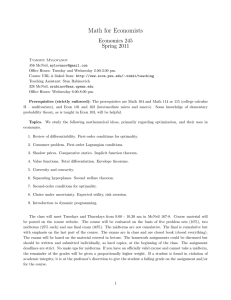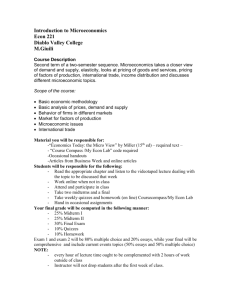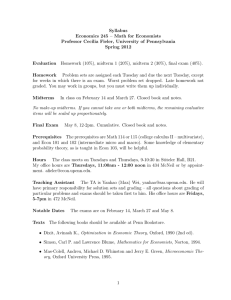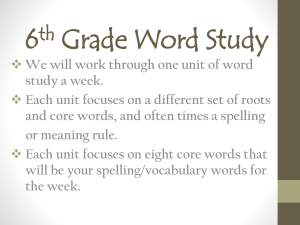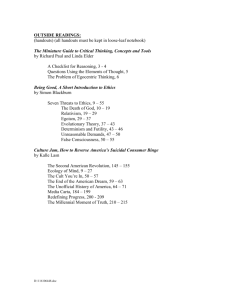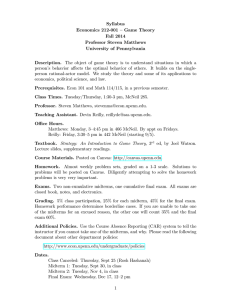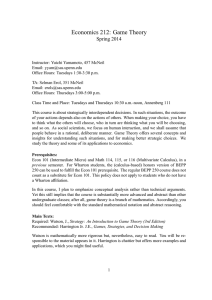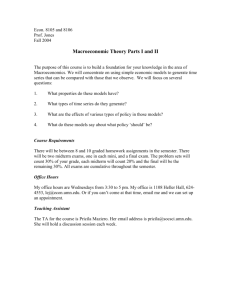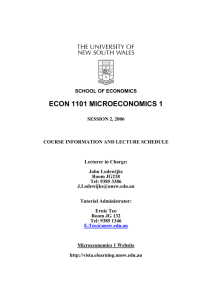final exam review
advertisement
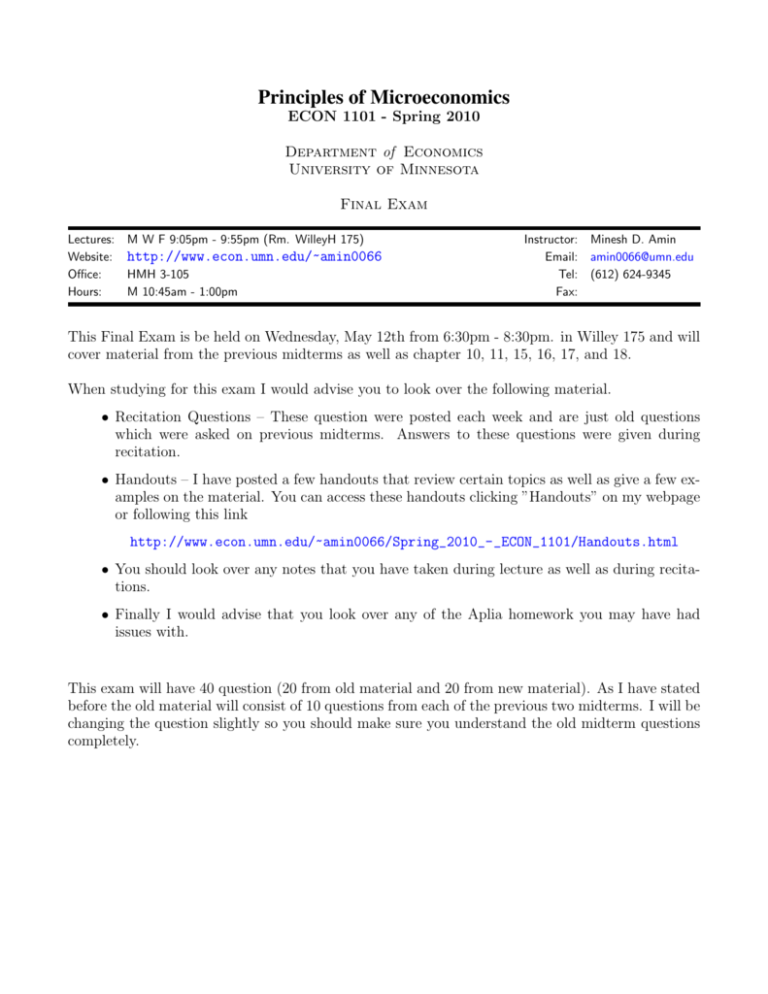
Principles of Microeconomics ECON 1101 - Spring 2010 Department of Economics University of Minnesota Final Exam Lectures: Website: Office: Hours: M W F 9:05pm - 9:55pm (Rm. WilleyH 175) http://www.econ.umn.edu/~amin0066 HMH 3-105 M 10:45am - 1:00pm Instructor: Minesh D. Amin Email: amin0066@umn.edu Tel: (612) 624-9345 Fax: This Final Exam is be held on Wednesday, May 12th from 6:30pm - 8:30pm. in Willey 175 and will cover material from the previous midterms as well as chapter 10, 11, 15, 16, 17, and 18. When studying for this exam I would advise you to look over the following material. • Recitation Questions – These question were posted each week and are just old questions which were asked on previous midterms. Answers to these questions were given during recitation. • Handouts – I have posted a few handouts that review certain topics as well as give a few examples on the material. You can access these handouts clicking ”Handouts” on my webpage or following this link http://www.econ.umn.edu/~amin0066/Spring_2010_-_ECON_1101/Handouts.html • You should look over any notes that you have taken during lecture as well as during recitations. • Finally I would advise that you look over any of the Aplia homework you may have had issues with. This exam will have 40 question (20 from old material and 20 from new material). As I have stated before the old material will consist of 10 questions from each of the previous two midterms. I will be changing the question slightly so you should make sure you understand the old midterm questions completely. 2 Midterm #1 Review Topics for the non-cumulative portion of the Final You should be familiar with the following topics • Definitions – You should be familiar with these terms both in terms of their written definitions as well as application which use them. This is a broad list of terms but I am not limited to just these terms. – Monopoly – Oligopoly – Perfect Price Discriminating – Natural Monopoly – Monopolistically competitive firm – Public Goods – Common Resouces – Externalities – Game Theory – Rival and Excludable Goods – Value of the marginal product of labor (VMPL) – Dominant Strategy Equilibrium and Nash Equilibrium • Firm Structures. – You should know about the different types of monopolies. – You should have a firm grasp on how a firm makes it profit maximizing decision and how to calculate profits. – You should know about Marginal Cost Pricing and Average Total Cost Pricing. – You should be able to compare the different types of firm structures. • Game Theory – You will be expected to set up a game and find the equilibrium strategies. – You should be familiar with the relationships between tax burden and elasticities as well as subsidy benefits and elasticities. Department of Economics University of Minnesota Minneapolis, MN 55454
